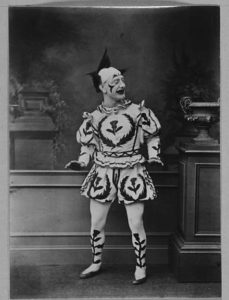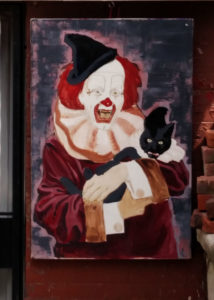

You may have noticed how the corporate owned television, print and internet media has reported on nearly every creepy clown story since the initial reports in North Carolina a few months ago. There were many creepy clown sightings before that but they were sporadic, memorable but sporadic. Soon after reports in North Carolina, 10 sightings of clowns in the South Carolina were seen. Days later a 50-year-old woman told police that four men dressed as clowns followed her home in a black car. One of the men waved at her before driving off. Residents at an apartment complex in Greenville reported seeing clowns lurking in the nearby woods. Another resident told police that she’d been walking home to her apartment around 2:30 a.m., and saw a “large-figured clown with a blinking nose standing under a post light near the garbage dumpster area. According to the report, several children also told the deputy that clowns had approached them behind one of the apartment buildings and tried to lure them into the woods “by displaying large amounts of money.” In Winston-Salem, North Carolina, residents reportedly saw a clown attempting to entice kids into the woods with treats. Reports of creepy clowns have spread to Pennsylvannia, Kentucky, Alabama, Kansas, Colorado, and Nebraska. Yes, a remake of the 1990 Stephen King film is coming to a theater near you but I suspect something else has taken hold beyond viral marketing. Something deep in the collective psyche. We explored the topic of evil clowns last year in depth with Laurie Schapira of the CG Jung Institute in New York, maybe too in depth.
Who knew the creepy clown archetype would sweep the world.
We listen to a past show from August 2015. There are many faces of this archetype throughout history but the “evil clown” has taken center stage in the horror-genre in popular culture. We touched on this with past guest Michael Bala and referenced the Stephen King novel “It.” In one description of the book which featured a demented, murderous clown named Penny- Wise, it reads quote – it did for clowns what Psycho did for showers and what Jaws did for swimming in the ocean. Michael Bala suggested that Pennywise is the expression of repressed desires and fears, the sewers represent the subconscious realm. There’s a deep reservoir of examples and illustrations of the evil clown. It could actually be eclipsing the non-evil clown archetype, I’m not sure.
How did the evil clown genre emerge? Was it side by side from the beginning? Buried in this research is the freemason or shriners connection which has undoubtedly influenced the genre throughout the decades with pins, posters, and tattoos. There’s also the evolution of the dark side of funny, the psychotic homicidal maniacs, or malevolent tricksters and pranksters where the shadow archetype emerges naturally over time processing through the collective consciousness. The clown’s appearance is devilish, with a chalk-white face, bright colored hair and ghoulish large mouth. The scene is often set with slightly out of tune carnival music. A late storm rumbled through the area and now the deserted circus tents are silhouetted on the outskirts of a small New England town. As the wind picks up, you hear the cackling of the evil clown in the distance. Carl Jung was a Swiss psychotherapist and psychiatrist, and the founder of analytical psychology.
In 1917 he wrote in his essay “On the Psychology of the Unconscious” about the personal shadow as the other in us. The negative side of the personality, the sum of all unpleasant qualities we like to hide. It embarrasses or shames us. “Everything with a substance casts a shadow, the ego stands to the shadow as light to shade.” As listeners may know, jesting and clowning is a very ancient art that can be traced through Egypt and medieval Europe. That’s plenty of time for the shadow to develop. Clyde Lewis article Evil Clown Evil.
Guest – Laurie Schapira is a teacher at the C.G. Jung Institute of New York and former president of its board of directors. She’s a filmmaker and author of the Cassandra Complex: Living with Disbelief: A Modern Perspective On Hysteria, she also wrote directed and produced the film titled The Prophecy of the Seeress.

In the secret order world up to current times the Jesters are used as strong or hit men. I feel like it’s a hidden tribute to the 44th act of our election process.
They design society and enjoy celebrating it.
great show
They are celebrating. Someone sent me these links – http://sandyfrost.newsvine.com/_news/2012/06/12/12188824-the-shriners-dirty-little-secret-royal-order-of-jesters-roj-resource-updated
http://sandyfrost.newsvine.com/_news/2008/05/25/1511547-brazilian-fishing-trip-depositions-masons-pictured-having-sex-with-teen-prostitutes